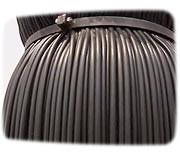Let's be positive.
Maybe it's the muggy weather, but things have been oppressively negative as of late. That includes the art that I have thus far scene in Shanghai. Let's be brief, the exhibit I have in mind is the CCP propaganda museum. It's underground, it's got letters of self incrimination, its got lots of hating on other countries, it's got lots of hating on its own country even. In my book, that's a pretty depressing place (an interesting and beautiful depressing granted).
But let me digress, we are trying to be positive no? What I personally found most interesting about this exhibit were the smiles. Not fake smiles, not smiles used to boost country moral, but rather real genuine smiles. Unless gullible is written on forehead (actually being convinced by propaganda would not be so strange...) I truly believe that beneath all of the sweat and blood is something positive.
How can I tell? The process is very much like telling a real smile from a fake smile on a person. I ask myself is there a reason to smile? Is the smile genuine? Are others smiling? In this propaganda museum I found all three, in the same picture(s) no less.
No, I am not talking about Mao, that man's smile is a little on the creepy side, genuine or not is another matter. Rather the picture I have in mind is a large gua hua styled depiction of a wedding scene. The picture takes up the entire wall, and unlike some of the posters, is an original. The first aspect of the picture that caught my eye were the colors. Vibrant and alive, the picture isn't suffocated by reds, yellows and golds (something US propaganda does as well). Instead there are greens, small and large shrubbery, browns of the houses, and blue, red and yellow on the clothing of the people, note the particularly pokemon-esque hat on an extremely silly looking child. The scene has a lot happening at once, kids running around, old men and women laughing, mothers holding onto their children, people of all sizes and ages, and of course the meeting of the couple and the parents. But again, to myself, the most telling aspect of all, are the smiles. The face's are flushed from laughter, their eyes are squinted, and all the wrinkles that come from a big grin are more then apparent. To me that's a genuine smile, not some "cheese" pose.
It was just last week that we had a lecture on sex in the Intro to China course. Long story short, sex though seemingly oppressed in most fashions, was also in ways set free because of marriages through "love" and courtship. Young courtship was not uncommon in the era, and during the Mao era, many good happy marriages were made. It is the same feeling that I am getting here. Although it is true that there is an oppressively depressing nature to the Mao era and the artwork of the time period, the underlying happy aspects of life, somehow manage to show themselves. Perhaps mother and child may been separated, but at least husband could find his spouse (or the other way around).
It honestly is an astounding painting, not just because it's juxtaposed with the self incriminating notes. It's not the technicality of the piece (it looks good but not particularly unique), and its not the deep meaning of its contents. It's simply a happy looking snapshot in a not so happy time. But that's optimism for you.
Here's to staying positive in not so positive a time.






























.jpg)
.jpg)
.jpg)





















